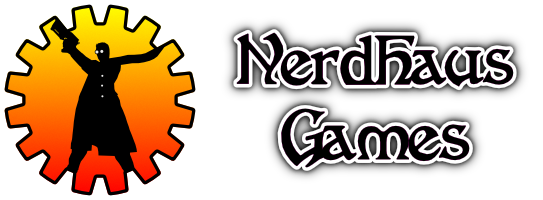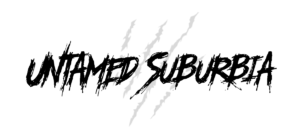This is an exciting one for me. I haven’t gone much beyond re-skinning a thing or working within someone else’s framework, be it Savage Worlds, Fate, or some horror one-shot, in some time. And while yet another Apocalypse World hack may feel like a re-skin, my goal for Untamed Suburbia is to design a game that does something new for me: take a core idea from conception to fruition intact. I’ve pondered a number of projects over the years (one about school kids as an Encyclopedia Brown meets Bruce Colville supernatural adventure series, or something that scales out a bit like Reign as has you playing both PCs at ground level and the major players in the setting working behind the scenes at the same time), but none of them quite landed. There are notes, but few of them got the nudge they needed.
When I started talking about Untamed Suburbia, folks were interested. The opportunity to play animals, not anthropomorphic or magical or talking animals, but animals: four feet, eat off the ground, sleep in a nest animals as PCs resonated with folks. I have wanted to do a card-based selection for character creation for a little while and this seemed like a good time to put it together. So notes became a short rulebook became cards became a session at Midwest Gamefest!
As a Powered by the Apocalypse hack, there are some common themes here with other PbtA games like Bluebeard’s Bride: 2d6+modifier rolls vs. a difficulty of 7, with a bonus available at 10+. Character responses are formalized as Moves, and the GM doesn’t roll dice. Setting creation, or at the very least player input on how the specifics play out, is a big part of the initial setup. In my case, this comes as questions that need to be answered about the neighborhood: where is it in human space and more importantly, where is it geographically to lead to various animal options? What new threats are present here? Who are your rivals and why? These seed the basis for the adventure and in campaign play would result in the long-term action you’re wrestling with.
Character creation is also original to this build. I’ve developed cards that have traits on one side like Predator, Flight, Nocturnal, Clever, or Bad Reputation. The other half of the card has a pair of stats from the four in the game: Do, Fight, Flee, and Sense. By arranging the cards, you create your animal with three traits and three stat pairs. You determine your species based on the traits selected, so a Nocturnal Predator with Flight may be an owl. You track health and the use of your traits by flipping cards face down, so it is possible to run the game with just the cards and no character sheets. For campaign play there’s more to keep track of, but the intent was to step away from the formalized playbook idea. Some of my next round of writing is likely to spill over into one-shot play so the character sheets may end up being necessary in the long run, but I want to give players the chance to surprise us with their animal choices. My players on Saturday filled our menagerie with an aloof owl named Luna, a hyperactive hummingbird named Sweets, Shelly the surly armadillo, and the domesticated, sweater-wearing raccoon Ralphie.
Gameplay runs in a traditional fashion, with the GM asking questions and getting the players to fill in details around the edges. We determined in the session setup that animals had gone missing, there was a new bulldog that no one really knew, and a local animal control officer was trying to make a name for himself by catching anything that moved. Somewhere in the middle of the stated rivalries and the plot points my players found themselves rousing their nocturnal friends to search for the local mediator in the animal kingdom, a possum named Snout who had been missing since last night. They would quiz a gossipy crow, search out a great beast in the sewer, befriend a dimwitted dog who rotated between “HEY!” and “[EXPLETIVE DELETED]!” depending on the tone of his barks, and get themselves caught to get an inside man on the animal control shelter, all resulting in a mad dash for freedom with releasing a dozen dogs from cages and a daring airlift for Snout from an upper cage at the vet’s office.
The game is built between two specialized mechanics: a resource pool called Instinct that lets you re-roll but removes player agency in the outcome (so success is narrated as an impressionistic series of images, teeth and cages and fur and speed and now you’re outside), and an aid system called Pack Dice that lets you contribute to another player’s roll. Initially limited, the Pack connection levels up between sessions so that animals who help each other out get better and better at it. The PCs don’t change, their relationship to each other does. Our fast-talking hummingbird Sweets was able to dart in and provide some distraction to give one of the other PCs a hand while they were infiltrating the animal control center, so she could use his die roll if it was higher than one of hers to get inside.
Response was positive, and I think we all had enough fun that I’ll keep developing it. The pre-game questionnaire will get formalized a bit to help the GM out and help scaffold the player decisions so that it’s less “So what’s new in your neighborhood?” blank-page-y. Player moves need refining, but it’s also likely that the trait system will get expanding to include more cards and a custom move associated with each trait. PC connection questions will also be included on the cards to help refine some of the initial pack relationships. A playtest copy will eventually make its way out on the Patreon, but until then the best chance to play it is either keep an eye out at local conventions or ask me directly and see if I’m doing house calls yet. I imagine this isn’t the last you’ll hear of Untamed Suburbia.
Check back after the weekend and we’ll try to raise the elder god Soth in just about the least coordinated fashion ever when Lovecraftian cultists get the Coen Brothers treatment with Soth.

